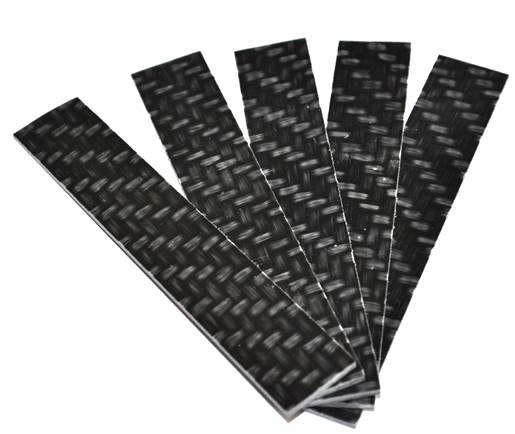Fiber-reinforced Composites
Fiber-reinforced composite plastics have been an integral part of the KTP´s research for years. Our focus is on continuous fiber-reinforced thermoplastics, which have played an increasingly large role in the industry in recent years.
The following gives an overview of current research topics:
Hybrid Joining (metal and fiber-reinforced plastics)
- in-mold riveting
- stamp riveting
- adhesive bonding
Recycling
- shredding/crushing
- regranulation
- direct processing of the shredded material with injection molding
Back-Injection Molding of Fiber Composites
- joint adhesion
- infrared heating
- material degradation/decomposition
Aging Behavior
- influence of temperature and moisture content
- influence of prior mechanical damage
- development of ultrasonic measurement system for non-destructive aging characterization
In order to carry luggage on motorbikes or to increase the loading volume of a car, an additional case or bag is required. Both systems have advantages and disadvantages. A suitcase protects the contents from external influences and in the event of a fall. However, suitcases on motorbikes tend to be bulky and increase the width of the vehicle, which leads to a deterioration in driving characteristics. Panniers have the advantage of low mass and easy dismantling, but they offer little protection in case of falls, are often not waterproof and offer poor theft protection. Both systems should be dismantled when not in use so as not to disrupt riding operations.
The intended development of a new luggage system is to combine the advantages of the two luggage approaches and at the same time expand the functionality. The development adapts to the necessary size depending on the luggage volume. In the unused, retracted state, the case should not negatively influence the appearance and riding characteristics of the motorbike. The development therefore provides for a new conception of a pannier that can change its shape by using a stretchable, flexible and high-strength fibre composite plastic. This enables the suitcase system to take on and take off any geometry and thus use the loading volume many times more efficiently. From the automotive sector, medical technology and various other areas of application in the packaging industry, thermoplastic elastomers are known for their high stretchability and good haptic properties. In order to use the TPE as a base material, but at the same time to be able to guarantee appropriate strength, a fibre semi-finished product is to be introduced into the TPE. Here, the compatibility of the fibre semi-finished product and the TPE must be ensured. This is a particular challenge because the two materials differ greatly chemically and in terms of their mechanical properties. The special feature of the resulting continuous fibre-reinforced TPE is a high flexibility with a simultaneously directed reinforcing effect in the direction of the load.


